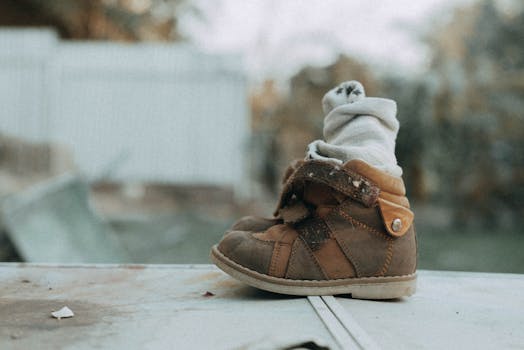George de Mestral and Velcro: From Idea to Everyday Use

Have you ever wondered how some of the most common items in our lives came to be? One such invention, which has woven itself into our daily routines, is Velcro. The story of Velcro's creation is as captivating as its diverse applications. It begins with an observant Swiss engineer named George de Mestral and a simple walk in the woods.
In 1941, de Mestral was out hiking when he noticed that burrs kept sticking to his dog's fur and his clothes. Curiosity led him to examine these burrs under a microscope, where he discovered tiny hooks that latched onto anything loop-like. This natural mechanism inspired him to develop a new type of fastener. After years of experimentation with different materials, de Mestral successfully created what we now know as Velcro, a portmanteau of the French words "velours" (velvet) and "crochet" (hook).
Velcro's journey from concept to widespread use wasn't immediate. Initially, it found applications in specialized fields like aerospace and medical industries. However, its ease of use and versatility soon led to broader adoption in various sectors, including fashion, sports, and everyday household items. Today, Velcro is ubiquitous, simplifying tasks and improving convenience for millions of people worldwide.
The Birth of an Idea
George de Mestral's fascination with nature's design sparked an idea that would revolutionize fastening technology. The detailed structure of burrs provided a blueprint for creating a practical and reusable fastener. De Mestral spent over a decade perfecting his invention, experimenting with different types of hooks and loops until he achieved the ideal combination.
His perseverance paid off when he finally patented his invention in 1955. The initial reception was lukewarm, as many were skeptical about its utility beyond niche applications. However, de Mestral's vision extended beyond immediate commercial success; he saw the potential for widespread use in everyday life.
From Prototype to Product
The transition from prototype to commercial product required overcoming several challenges. Early versions of Velcro were made from cotton, which wore out quickly. De Mestral then turned to synthetic fibers like nylon, which proved to be more durable and effective.
Manufacturing processes also needed refinement to produce Velcro on a large scale. De Mestral collaborated with textile manufacturers to develop specialized machinery capable of mass-producing the hook-and-loop fasteners. By the late 1950s, Velcro was ready for broader market introduction.
Pioneering Applications
One of the first significant endorsements of Velcro came from NASA in the 1960s. The space agency used Velcro in astronauts' suits and equipment to secure items in zero-gravity environments. This high-profile application demonstrated Velcro's reliability and functionality, boosting its credibility.
The medical field also embraced Velcro for its convenience and adjustability. It became a staple in orthopedic braces, surgical garments, and other medical devices where secure yet adjustable fastening was crucial.
Mainstream Adoption
As awareness of Velcro grew, so did its applications in everyday products. The fashion industry saw potential in using Velcro for clothing closures, shoes, and accessories. Sports equipment manufacturers adopted it for gear that required quick fastening and adjustment.
Household items like cable organizers, wall hangings, and child-friendly fasteners further showcased Velcro's versatility. Its ease of use made it popular among consumers looking for practical solutions to everyday problems.
Velcro Today
Today, Velcro is an integral part of countless products across various industries. Its adaptability continues to inspire innovation, leading to new uses in emerging fields such as wearable technology and smart textiles.
The enduring popularity of Velcro can be attributed to its simplicity and effectiveness. It remains a go-to solution for fastening needs due to its reliability and ease of use.
| Industry | Application |
|---|---|
| Aerospace | Securing items in zero-gravity environments |
| Medical | Orthopedic braces and surgical garments |
| Fashion | Clothing closures and accessories |
| Sports | Adjustable gear and equipment |
| Household | Cable organizers and wall hangings |
| Technology | Wearable tech and smart textiles |
The Legacy of George de Mestral
George de Mestral's legacy lives on through his innovative spirit and determination. His keen observation transformed a natural phenomenon into a revolutionary product that has stood the test of time.
Velcro's impact on various industries underscores the importance of curiosity and perseverance in innovation. De Mestral's story serves as an inspiration for aspiring inventors and entrepreneurs worldwide.
The Future of Velcro
The future holds exciting possibilities for Velcro as technology continues to evolve. Researchers are exploring advanced materials and designs to enhance its functionality further. Potential developments include biodegradable versions and smart fasteners integrated with electronic components.
The continued relevance of Velcro highlights its foundational role in modern fastening solutions. As new challenges arise, this humble invention will likely adapt and thrive, continuing to simplify our lives in ways we have yet to imagine.